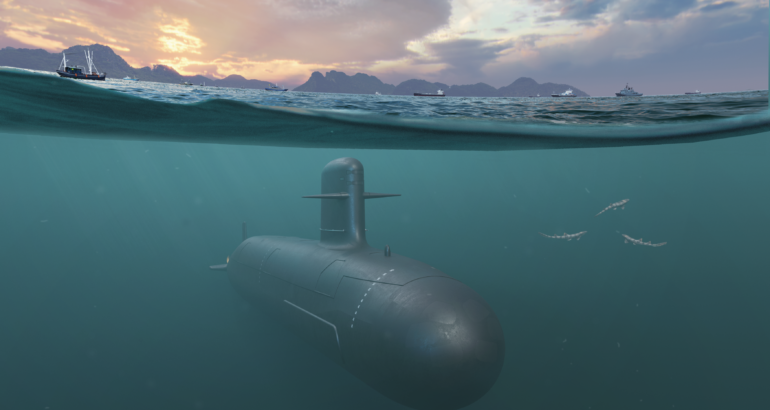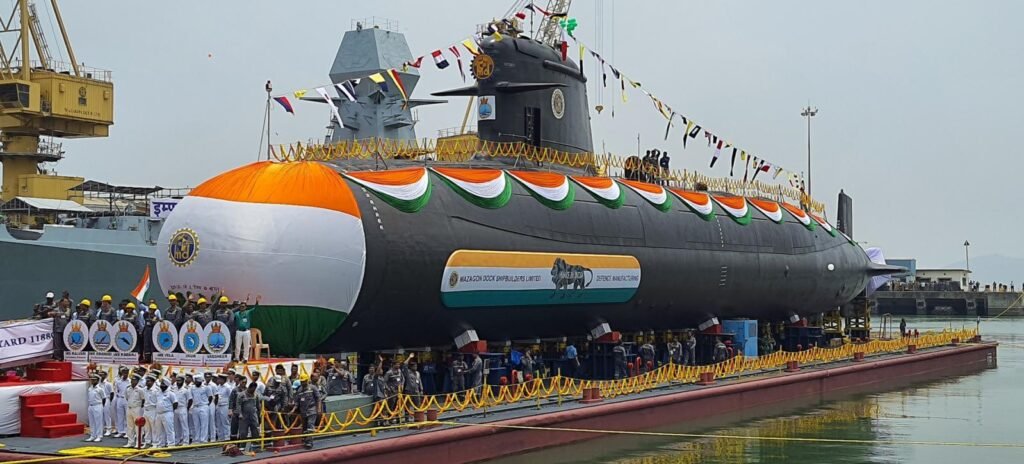Lithium-Ion vs AIP – Will India Opt For Scorpene Evolved Submarines?

By Girish Linganna
The negotiations for purchasing three more French Scorpene submarines by India from the French are underway. According to statements made by the Indian Ministry of Defence (MoD), they will be bought using the Buy (Indian) category, and Mazagaon Dock (MDL) will be responsible for their production. According to the last known statement from the MoD, acquiring more submarines with a higher percentage of indigenous content would not only contribute to maintaining the needed force level of the Indian Navy but will also create considerable employment prospects in the domestic sector.
The Naval Group, which makes the Scorpene Submarine, has recently made offers to other countries and has provided an overview of the potential technologies that can be incorporated into the three new submarines for the Indian Navy. France has offered to sell its most advanced Scorpene submarines to Indonesia. Naval News claimed that France’s Naval Group has proposed Indonesia to sell the “Scorpene Evolved,” a new form of the Scorpene submarine that the French company manufactures.

According to the article, the lithium-ion (Li-Ion) battery design added to the submarine’s propulsion system will give it the greatest endurance of any other type in the Scorpene family. With the full Li-Ion battery configuration, the Scorpene Evolved will have a total endurance of 80 days, an operational range greater than 8,000 nautical miles, a decreased indiscretion rate, and maintain peak speed for a longer time.
To better understand what “total endurance” means, the submarine can stay below for an impressive eighty days in this configuration with only two days spent on the surface. Furthermore, compared to typical lead-acid batteries and even AIP systems, li-ion batteries charge far faster and offer significantly more electrical power. As a result, the performance of submarine lithium-ion batteries is much nearer that of nuclear-powered vessels than the current conventional submarines.
It further states that the Indonesian Navy (PT PAL) will find it easier and less expensive to maintain and run the submarines than air-independent propulsion (AIP) ones, which require complicated offshore infrastructure and additional training for submariners and people involved in refuelling the system.
The Scorpene Evolved will be well-suited to the Indonesian Navy’s requirements, notably regarding the potential deterrence of Chinese submarines. These submarines will naturally have an advantage due to the stealth and operational capabilities of the most advanced Scorpene, as well as its array of weapons and detection systems, including the SM39 Exocet anti-ship missile and the F21 heavyweight torpedo, which, the French media says, is among the most advanced on the market at the moment.
The lithium-ion technology is more portable than the existing AIP systems. It requires a substantially lower level of maintenance, and, in contrast to the AIP systems, it can be recharged while the vessel is in transit. The same can be said for the requirements of the Indian Navy. However, the Indian Navy is interested in combining the Scorpenes with an AIP developed by the Defence Research and Development Organisation (DRDO). The DRDO AIP is, without a shadow of a doubt, more advanced than other AIP systems on the market, and it has an added advantage in fuel type and storage compared to those other AIP systems. However, it is developed when Li-Ion batteries are believed to be the future of conventional diesel-electric propulsion.
In addition, incorporating AIP causes an increase in the weight and length of the submarine and a speed reduction. If the submarine will be used for coastal operations in which speed is not an absolute need, AIP is a beneficial addition. Nevertheless, the conventional submarines of the Indian Navy pass across the Malacca Straits, located approximately 2300 kilometres from the eastern coast of India.
Why does the Indian Navy still need the AIP capabilities when they have access to Li-Ion batteries today when long-range torpedoes and submarine-fired missiles are available?
The goal is to launch the missile and exit the location as quickly as possible, as the platform has probably already been discovered. In contrast to AIP technology, which is only used in submarines, lithium-ion batteries are currently being implemented in various areas, including the automobile industry and portable computer devices. Despite its superior performance to the standard Scorpene submarine model, Scorpene Evolved is still available in a comprehensive local production, integration, and testing scheme for two submarines at PT PAL’s current submarine building facility in Surabaya. Indian MDL has an advantage here because it has built six Scorpene-class (called Kalvari Class) submarines.

As per Naval News, the French Naval Group is preparing to switch all its existing offers to the brand-new Scorpene Evolved system. This offer may also open up additional opportunities for the Indian Navy beyond the soon-to-be-announced purchase of three submarines of the Kalvari class. The Indian Navy’s insistence on AIP Technology is one of the primary causes that has contributed to the postponement of the P-75I tender in India, which has been going on for decades.
If the technology of batteries can advance, then the AIP technology can do the same. India shouldn’t give up on its homegrown AIP technology, and it needs to dedicate a submarine to testing and further developing it in the future. Due to the growing presence of the Chinese Navy in the region, in addition to the Pakistan Navy, India may require a fleet of coastal submarines (maybe the Indian Coast Guard can deploy them) with less sophistication in the future rather than using submarines of the Scorpene Class. In this scenario, I do not assert that AIP will be more beneficial or less expensive. India should carefully weigh its options.
The Indian Navy published a request for information (RFI) in October 2022, seeking to develop a lithium-ion battery system with a “high capacity.” The Indian Navy has expressed an interest in developing the capability to retrofit the technology onto its current fleet of submarines powered by lead-acid batteries. DRDO’s Naval Science and Technological Laboratory (NSTL), located in Visakhapatnam, is a research and development laboratory that has also produced a high-power Li-ion Battery Technology and holds knowledge of several technologies relevant to the construction of this technology. The DRDO has set criteria for the Transfer of Technology, whereby the underlying technology will be handed to interested manufacturing industrial partners. NSTL has recently asked Indian battery manufacturers who have sufficient experience, expertise, and willingness to absorb technology transfer and undertake production, certification, and supply of Lithium-ion (Li-ion) battery systems based on the High Power Lithium-ion Battery Technology (HPLBT) for their EOI. Under the EOI, 25 Ah Li-ion cells must be produced, tested, and evaluated before certification for their ability to function safely in Defence applications. We do not yet have the results in front of us. Meanwhile, articles in the press have mentioned the absurdity of equipping Indian submarines with Li-Ion batteries and AIP.
Naval Group’s announcement about the lithium-ion batteries for the Indonesian Scorpene Evolved submarines extends beyond Jakarta’s deal. It is hoped that the Indian Navy will take this boat.
(The author of this article is a Defence, Aerospace & Political Analyst based in Bengaluru. He is also Director of ADD Engineering Components, India, Pvt. Ltd, a subsidiary of ADD Engineering GmbH, Germany. You can reach out to him at: girishlinganna@gmail.com)





